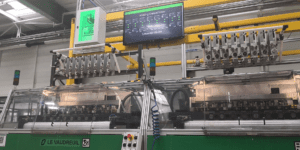Security systems are needed to protect facilities. IT is needed to run security systems. Apply a bit of basic math theory to these statements, and it is easy to conclude that IT is then needed to protect facilities. If you are thinking this sounds like OT and IT convergence, you’re right; but security requirements push the boundaries even further to compel departmental collaboration between OT and IT. At the core, lies the need for reliable delivery of clean and continuous power.
In this two-part blog series, I’ll review how the integration of IT and OT is needed for proper security and the important role of power protection. Keeping buildings operational, IT running and security systems up, depends on the availability of the network and server platforms they are running on, and these systems are only as available as the power supporting them.
Because these systems are increasingly connected and open, the departments themselves must come together as well. This is where safety and security now begins for any structure that requires active monitoring and access control.
IT and OT = IoT
The Internet of Things (IoT) is an integral part of modern security systems. Everything from IP-based cameras and DVR, to network enabled access control devices is changing the way these systems operate. The convergence of network and security system technology has been happening for a long time with — and, to some extent, without — deliberate intent.
This has provided great advantages in terms of functionality and deployment but with increased reliance on the type of server and network technology seen in IT environments. Unmanaged, this proliferation can result in “IT sprawl” which comes with risks and management challenges.
This is an example of the growing instances of remote islands of compute becoming a part of an edge infrastructure that can remain outside the domain of corporate IT management standards, but still be connected via network infrastructure.
Security applications are a great example of where such systems are only as reliable and available as the networks, servers and power supporting them. Centralized, remote management and uninterruptible power is imperative.
Physical security encompasses access control, lighting systems, DVR and all types of cameras in a manner that is fully digitized and generating a massive flow of data. Many subsystems are increasingly integrated with building management systems (BMS) and there is progressively more reliance on IT infrastructure.
Such highly connected facilities systems require management: application deployment, patches and software upgrades just like IT applications. IT has long been charged with handling this in the IT space and now the opportunities and challenges exist for them to do the same for OT applications like security.
The bottom line is, OT and IT are working towards the same goal — uptime — whether that means the comfort of building occupants and business continuity or the specific needs of safety and security.
In my next post, I’ll cover the security implications of a power loss and provide insight into how implementing centrally managed and monitored UPS systems that are tied to hardware and software systems — part of a network infrastructure that is an extension of both the IT and OT environments — will help ensure uptime.
See what 2,500 business decision makers around the world said about their vision of the Internet of Things in the IoT 2020 Vision Report.



